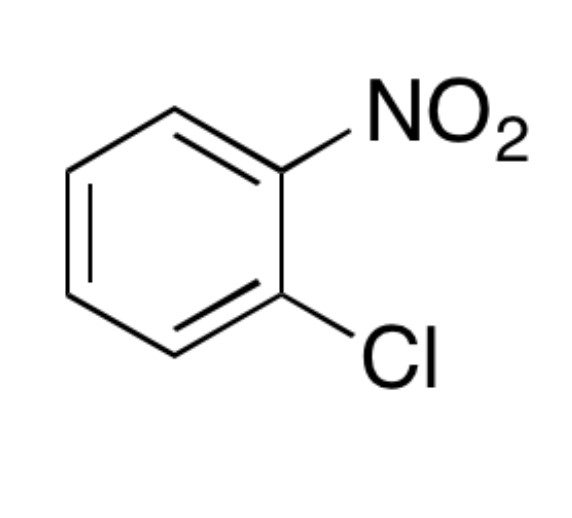Understanding the Applications and Market Trends of 1-Chloro-2-Nitrobenzene

1-Chloro-2-nitrobenzene is a crucial chemical compound extensively used in various industrial applications. It is an aromatic compound with substantial value in the production of dyes, drugs, and agrochemicals. The compound's molecular framework adds to its versatility, making it a valuable intermediate in organic synthesis. As industries evolve, the demand for high-quality chemical intermediates like 1-Chloro-2-nitrobenzene continues to grow, driven by advancements in technology and industrial processes.
The chemical properties of 1-Chloro-2-nitrobenzene make it appropriate for a series of applications. It is recognized for its security, solubility in organic solvents, and reactivity, which allow it to function effectively as a precursor in the synthesis of complex organic molecules. One of the primary uses of this compound is in the dye industry, where it functions as a key basic material in the production of azo dyes and pigments. These dyes are commonly used in textiles, plastics, and printing inks, contributing to the dynamic colors and toughness needed by these industries.
In the pharmaceutical sector, 1-Chloro-2-nitrobenzene plays a crucial role in the development of various medicines. It is used as an intermediate in the synthesis of pharmaceutical compounds that have antibacterial, antifungal, and anti-inflammatory properties. Researchers continue to explore new derivatives of this compound to develop more effective and more secure drugs that can address a wide variety of health conditions.
The agrochemical industry additionally benefits from the properties of 1-Chloro-2-nitrobenzene. It is used in the solution of pesticides, herbicides, and fungicides, contributing to boosted plant protection and return improvement. The compound's capacity to function as an intermediate in the synthesis of active components makes it a valuable asset in the development of sustainable agricultural remedies.
As global industries shift towards environmentally friendly practices, the chemical manufacturing sector is exploring methods to produce 1-Chloro-2-nitrobenzene with minimal environmental impact. Advances in environment-friendly chemistry methods, such as catalytic processes and solvent-free reactions, are being implemented to minimize waste generation and energy consumption. These efforts aim to ensure the sustainable production of chemical intermediates without compromising quality and performance.
Market patterns indicate a steady demand for 1-Chloro-2-nitrobenzene, driven by the expanding applications across various sectors. The expanding requirement for high-performance dyes, pharmaceutical innovations, and sustainable farming products contributes to the marketplace's positive outlook. Manufacturers are concentrating on enhancing production capacities, improving product quality, and abiding by stringent regulatory standards to meet the evolving demands of global consumers.
Quality assurance plays a vital role in the production of 1-Chloro-2-nitrobenzene. Strict adherence to industry standards and specifications ensures that the end product meets the required purity degrees and efficiency criteria. Analytical methods such as gas chromatography and high-performance fluid chromatography are employed to monitor the quality and consistency of the compound, ensuring it lines up with the desired application requirements.
The competitive landscape for 1-Chloro-2-nitrobenzene includes principals in the chemical manufacturing industry who are investing in r & d to present cutting-edge products and processes. Collaborations between chemical makers and end-users aim to create tailored remedies that address specific industry challenges and enhance general effectiveness.
In spite of its widespread usage, managing and storage space of 1-Chloro-2-nitrobenzene call for adherence to safety protocols. The compound's potential hazards demand proper protective measures, including the use of personal protective equipment, adequate ventilation, and safe disposal practices. Regulatory authorities provide guidelines to ensure the safe handling, transport, and disposal of the compound to stop 1-Chloro-2-nitrobenzene environmental and health threats.
Looking in advance, the future of 1-Chloro-2-nitrobenzene is appealing, with continuous advancements in chemical synthesis and application development. Innovations in sustainable production techniques and the emergence of novel applications are expected to drive further development in the marketplace. The recurring partnership between industry stakeholders, regulatory bodies, and research institutions will play a crucial role fit the future landscape of this functional chemical compound.
To conclude, 1-Chloro-2-nitrobenzene remains a vital element in various industrial applications, from dyes and pharmaceuticals to agrochemicals. Its distinct properties and versatility contribute to its continued demand across different sectors. With a concentrate on sustainability, quality, and innovation, the industry is well-positioned to meet the evolving requirements of the market while ensuring environmental and regulatory conformity. As research and technological advancements progress, 1-Chloro-2-nitrobenzene is readied to play a much more significant role in the chemical industry.